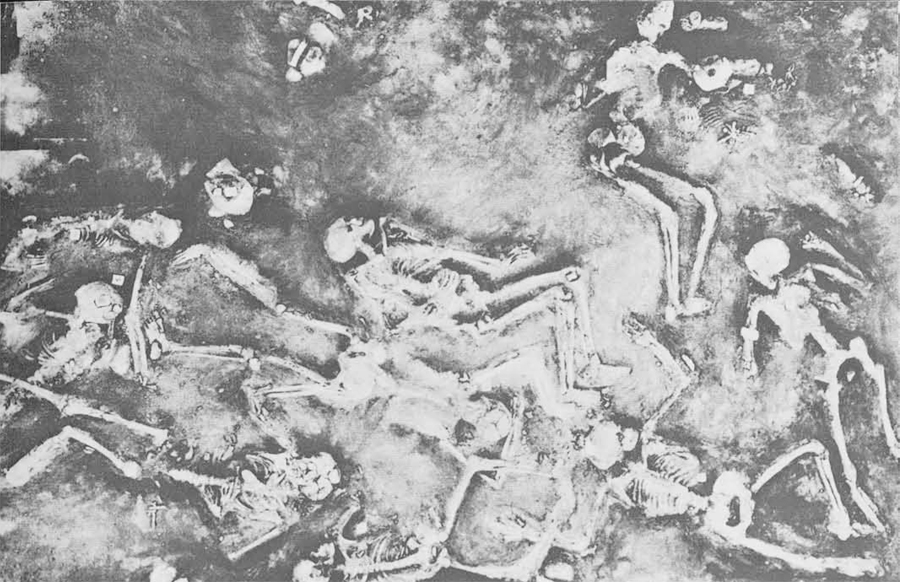Unveiling The Mysteries Of Mohen Gendaro Bodies
Mohen Gendaro, an ancient urban site in the Indus Valley, has captivated archaeologists and historians alike for decades. The remnants of this once-thriving civilization provide a glimpse into the lives of its inhabitants, particularly through the discovery of human remains. These "Mohen Gendaro bodies," as they are often referred to, have sparked curiosity and debate regarding the societal practices, health, and eventual decline of this enigmatic culture. As we delve into the details of the Mohen Gendaro bodies, we will explore the archaeological significance of these findings and what they reveal about the people who inhabited this region over 4,000 years ago.
Through meticulous excavation, researchers have unearthed numerous skeletal remains that offer invaluable insights into the daily lives and health of the Mohenjo-Daro population. The analysis of these bodies has not only shed light on their physical characteristics but has also raised questions about their burial practices, diet, and the societal structure of one of the earliest urban centers in human history. The Mohen Gendaro bodies are more than mere artifacts; they are the echoes of a society that flourished and ultimately faded away, leaving behind a legacy that continues to intrigue modern scholars and enthusiasts.
As we navigate through the depths of this fascinating topic, we will address several key questions surrounding the Mohen Gendaro bodies. What do these remains tell us about the health and lifestyle of the Indus Valley civilization? What burial customs were practiced during this time? Are there any notable findings that challenge our understanding of this ancient society? Join us as we uncover the layers of history intertwined with the Mohen Gendaro bodies, revealing the stories hidden beneath the soil.
What Are the Mohen Gendaro Bodies?
The Mohen Gendaro bodies refer to the skeletal remains discovered in the ancient city of Mohenjo-Daro, part of the Indus Valley Civilization. The site was excavated in the 1920s and has since been a focal point for understanding this advanced society. The bodies found at the site provide critical evidence of the health, diet, and living conditions of its inhabitants.
How Were the Bodies Discovered?
The discovery of the Mohen Gendaro bodies occurred during systematic excavations led by archaeologists such as Sir John Marshall. As they unearthed the ruins of the city, they stumbled upon burial sites containing human remains, which prompted further investigation into the burial practices of the time. The bodies were typically found in simple graves, often accompanied by pottery and artifacts, indicating a belief in an afterlife.
What Do the Remains Reveal About Health and Lifestyle?
Analysis of the Mohen Gendaro bodies has provided insights into the health and lifestyle of the Indus Valley people. For instance, skeletal examinations have revealed signs of malnutrition, disease, and physical stress, which suggest that while the civilization was advanced, it was not without its challenges. Some common findings include:
- Evidence of dental disease and wear
- Signs of physical labor reflected in bone structure
- Indicators of dietary deficiencies
What Burial Practices Were Observed?
The burial practices surrounding the Mohen Gendaro bodies have raised intriguing questions regarding the spiritual beliefs of the Indus Valley Civilization. Archaeologists have noted several key practices:
- Graves were often oriented in a specific direction, possibly reflecting cosmological beliefs.
- Accompanying artifacts suggest a belief in an afterlife, with items placed in graves for use in the next world.
- Some remains show signs of cremation, indicating diversity in funerary practices.
What Unique Findings Have Emerged from the Remains?
Among the many discoveries made in the excavation of the Mohen Gendaro bodies, certain findings have stood out as particularly noteworthy. These include:
- Evidence of advanced medical practices, including surgical procedures.
- Unique burial artifacts that suggest significant social status.
- DNA analysis revealing genetic links to modern populations.
How Do the Mohen Gendaro Bodies Compare to Other Civilizations?
When comparing the Mohen Gendaro bodies to remains from other ancient civilizations, several similarities and differences emerge. For example, similar to Egyptian burial practices, the Mohenjo-Daro society placed importance on the afterlife. However, unlike the elaborate tombs of the Egyptians, the graves in Mohenjo-Daro were simpler, reflecting different cultural values.
What Challenges Do Researchers Face in Studying Mohen Gendaro Bodies?
Despite the wealth of information derived from the Mohen Gendaro bodies, researchers encounter numerous challenges in their studies:
- Decomposed remains that hinder DNA extraction and analysis.
- Limited historical records that make contextual understanding difficult.
- The need for advanced technology to analyze the remains accurately.
What Is the Future of Research on Mohen Gendaro Bodies?
The future of research on the Mohen Gendaro bodies looks promising, as advancements in technology and interdisciplinary approaches allow for deeper analysis and understanding. Collaborations between archaeologists, anthropologists, and geneticists will likely yield new insights into the lives of these ancient people and their cultural practices. Continued excavation and study of this site will undoubtedly enhance our comprehension of the Indus Valley Civilization and its lasting impact on human history.
Conclusion: The Lasting Legacy of Mohen Gendaro Bodies
In conclusion, the Mohen Gendaro bodies serve as a vital link to an ancient civilization that has much to teach us about early urban life. Through continued research and exploration, we can uncover the mysteries surrounding these remains, offering a more profound understanding of the human experience in the Indus Valley. As we reflect on the findings, it becomes clear that the Mohen Gendaro bodies are not merely relics of the past but are integral to the narrative of humanity’s journey through time.



ncG1vNJzZmivp6x7s7HBnqOrmZ6YtbjFzmeaqKVfnru0tcahq6xtX6K8qbHNZp6eppSWv7B5waibop2jY7W1ucs%3D